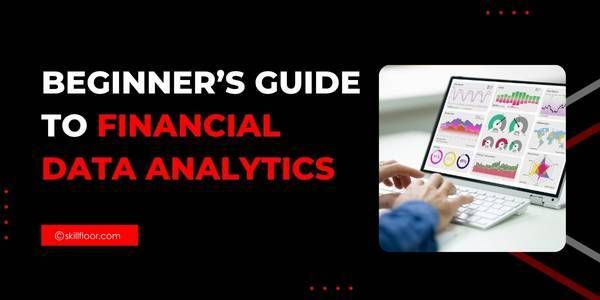Real-time Data Analytics: Powering Informed Decision-Making
Explore the role of real-time data analytics in enabling informed decision-making. Discover the benefits and applications of real-time analytics.

In today's fast-paced and data-driven world, making informed decisions is crucial for businesses to stay competitive and responsive. The advent of real-time data analytics has revolutionized the way organizations gather, process, and utilize data to drive their decision-making processes. This blog explores the concept of real-time data analytics and its transformative impact on decision-making.
Real-time Data Analytics
Real-time data analytics is a transformative approach that enables organizations to extract immediate insights from data as it's generated. Unlike traditional batch processing, real-time analytics minimizes the delay between data collection and analysis. This agility empowers businesses to make informed decisions promptly, whether by tracking customer behavior, optimizing operations, or managing risks.
The key principle behind real-time data analytics is its ability to provide actionable insights in the moment. By processing data as it arrives, organizations can react swiftly to changing trends and market dynamics. This approach is especially relevant in today's data-driven landscape, where businesses strive to stay competitive by adapting quickly to evolving customer preferences and market conditions.
Technological advancements have fueled the rise of real-time data analytics. The proliferation of IoT devices, sensors, and interconnected systems has generated a vast stream of data. Real-time analytics capitalizes on this data torrent, uncovering patterns and correlations that might have gone unnoticed in traditional processing methods.
Immediate impact can be seen in customer experiences. Retailers can personalize recommendations and provide instant support based on real-time insights into user behavior. This personalized touch not only enhances customer satisfaction but also drives sales and loyalty.
The Importance of Real-time Data Analytics
Real-time data analytics has emerged as a game-changer for businesses across various industries, revolutionizing the way organizations operate and make decisions. Its importance lies in its ability to provide immediate insights and enable rapid response to changing scenarios. Here are some key aspects that highlight the significance of real-time data analytics:
-
Timely Decision-Making
In a world driven by information, the ability to make timely decisions is paramount. Real-time data analytics empowers businesses to monitor events, trends, and activities as they happen, allowing decision-makers to respond swiftly and capitalize on opportunities or mitigate risks. Whether it's adjusting marketing campaigns, modifying supply chain operations, or refining customer experiences, the immediacy of real-time insights ensures that decisions are based on the most current data available.
-
Customer-Centricity
Customer preferences and behaviors are constantly evolving. Real-time data analytics enables organizations to understand their customers' interactions in real time, tailoring offerings, products, and services to match these changing needs. By analyzing live customer data, businesses can enhance personalization, improve customer satisfaction, and foster brand loyalty.
-
Operational Efficiency
For industries with complex operations like manufacturing, logistics, and energy, real-time data analytics optimizes processes by identifying inefficiencies and bottlenecks in real time. This leads to streamlined operations, reduced downtime, and improved resource allocation. Predictive maintenance, made possible through real-time analytics, helps prevent equipment failures and reduces unplanned downtime, ensuring continuous operations.
Implementing Real-time Data Analytics
Implementing real-time data analytics requires a strategic approach to harness the power of instant insights. This process involves a series of well-coordinated steps that ensure data is collected, processed, and analyzed in real time to enable informed decision-making.
-
Advanced Data Collection: The foundation of real-time data analytics lies in capturing data as it's generated. This entails integrating various sources such as IoT devices, sensors, social media feeds, and transaction logs. These sources continuously produce data points that provide a comprehensive view of various aspects of the business or operation.
-
Processing Power: To handle the velocity and volume of real-time data, organizations need robust processing capabilities. Cloud computing platforms offer scalable resources to process data streams efficiently. Edge computing, on the other hand, involves processing data closer to the data source, reducing latency and ensuring faster insights.
-
Streaming Analytics: Streaming analytics tools play a pivotal role in real-time data processing. These tools are designed to ingest, process, and analyze data as it flows in real time. Technologies like Apache Kafka and Apache Flink enable the creation of data pipelines that process data on the fly, making insights available almost instantaneously.
-
Machine Learning Integration: Incorporating machine learning into real-time analytics can enhance decision-making by providing predictive capabilities. Machine learning algorithms learn from historical data and continuously adapt to new data as it arrives, enabling the identification of patterns, anomalies, and trends in real time.
The Essence of Real-time Data Analytics
Real-time data analytics represents the essence of immediacy in decision-making. Unlike traditional data processing methods that involve delayed analysis, real-time analytics operates on the principle of processing data as it's generated. This approach ensures that insights are gained instantaneously, allowing businesses and organizations to stay ahead of rapidly evolving trends and customer preferences.
By tapping into the pulse of data as it flows, real-time analytics empowers decision-makers with the most up-to-date information to make agile, informed choices. This real-time approach proves indispensable in sectors where every moment counts, from financial trading to customer engagement, offering the potential to transform raw data into actionable wisdom without delay.
Challenges and Considerations
Challenges
-
Data Quality: Rapid processing can lead to errors or incomplete data, compromising the accuracy and reliability of insights.
-
Infrastructure Costs: Setting up and maintaining the necessary hardware, software, and networking infrastructure can be expensive.
-
Scalability: Ensuring the system can handle increased data volumes and users without sacrificing performance is a challenge.
-
Complexity: Real-time data analytics systems can be complex to design, implement, and manage, requiring specialized expertise.
-
Integration: Integrating real-time analytics with existing systems and processes may require substantial effort and customization.
Considerations
-
Data Strategy: Define a clear data strategy to determine what data to collect, how to process it, and what insights are valuable for decision-making.
-
Infrastructure Planning: Carefully plan the required infrastructure, whether cloud-based, on-premises, or a hybrid setup, to ensure scalability and reliability.
-
Data Governance: Establish data governance practices to ensure data quality, consistency, and compliance with regulations.
-
Real-time vs. Near-real-time: Determine whether true real-time processing is necessary or if near-real-time processing meets your requirements and is more manageable.
-
Analytics Tools: Choose appropriate analytics tools and technologies that can process and analyze data in real time effectively.
-
User Experience: Design user-friendly dashboards and interfaces that enable decision-makers to access and interpret insights quickly.
In the digital age, organizations must adapt to a rapidly changing business landscape. Real-time data analytics provides a powerful tool to meet this challenge head-on. By collecting, processing, and analyzing data as it's generated, businesses can make informed decisions that positively impact customer experiences, operational efficiency, risk management, and overall strategic direction. However, successful implementation requires a well-thought-out strategy, robust infrastructure, and a commitment to maintaining data quality and security. As technology continues to evolve, real-time data analytics is set to become an even more integral part of decision-making processes across various industries.


























































